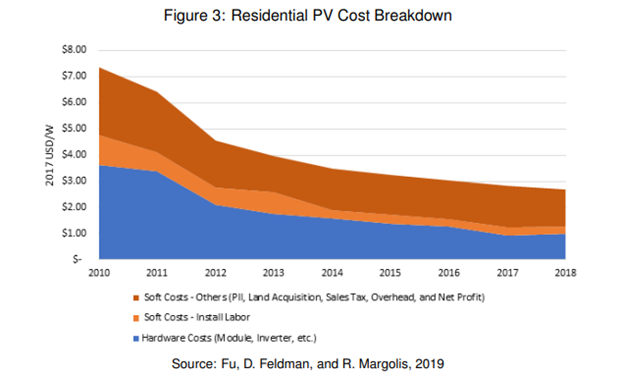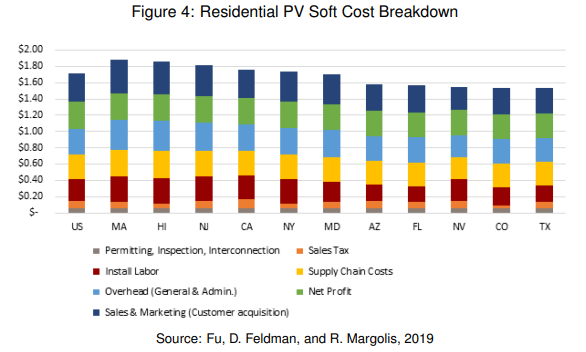The Soft Costs of Distributed Solar
Distributed solar generation can contribute to the decarbonization of state economies, but the relatively high soft costs – the non-hardware expenses of installing a solar system – remain a key barrier to more widespread solar energy adoption. In 2018, soft costs made up 63% of the total price tag that homeowners could expect to pay when installing a new system. Hardware costs have fallen rapidly over the last decade, decreasing from $3.64/W to $0.99/W, meaning that soft costs make up a growing share of solar’s total cost. Reducing the overall cost of solar by reducing soft costs will make solar energy generation a more attractive option moving forward.

The National Renewable Energy Laboratory (NREL) identifies eight distinct categories of soft costs:
- permitting
- inspection and interconnection
- install labor
- sales tax
- overhead
- net profit
- customer acquisition
- supply chain costs
Experts point to several ways in which policy makers might reduce soft costs by: moving permitting online, standardizing processes across jurisdictions, reducing wait times and fees for permits, lowering federal import tariffs on solar panels, increasing subsidies to consumers, and supporting group purchasing campaigns. The most effective combination of these strategies will differ by state and locality and localized research is needed to determine which combination of cost-reduction strategies will be most effective for local communities. It is clear, though, that reducing soft costs will make solar energy a more appealing option to residential and commercial consumers. This will help the state reach its zero emissions goal by 2050, making the reduction of soft costs an attractive policy action item.
For the full report, download the file below.



